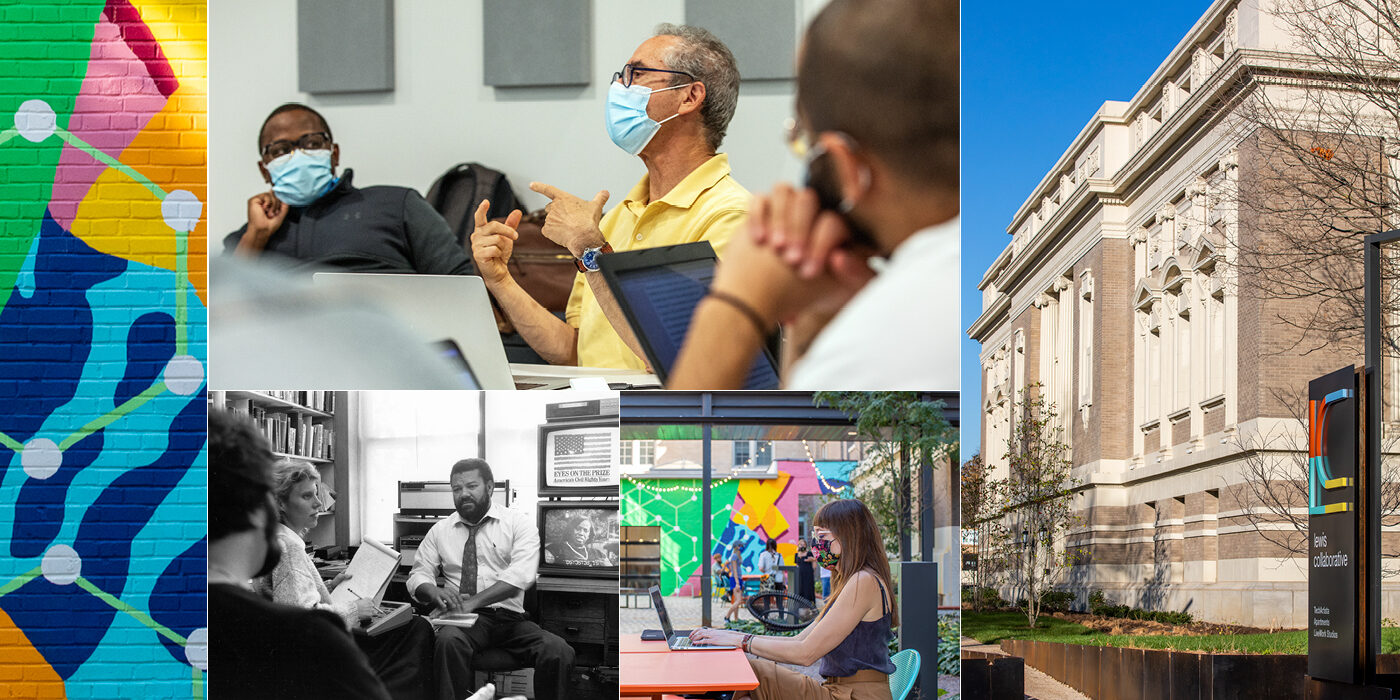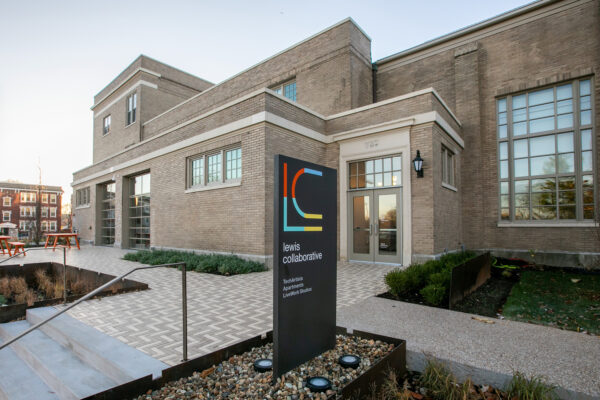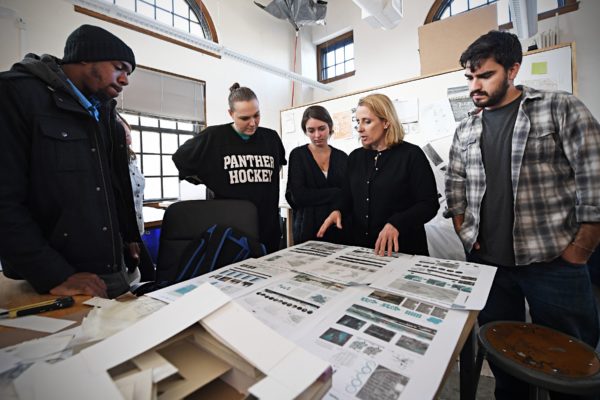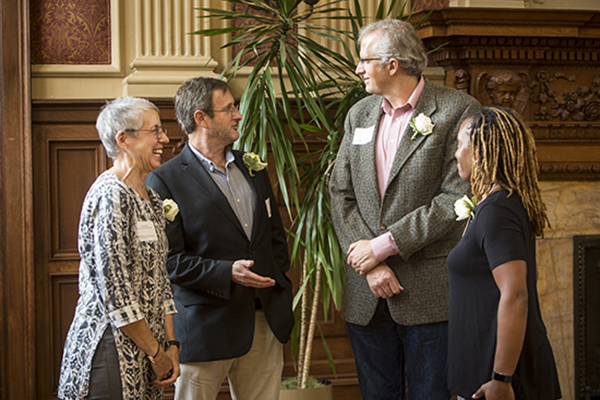“What exactly are we looking for?”
The question, posed by Abdallah Belhadj, a senior in Arts & Sciences, is at once simple and loaded. A beat passes.
“I’ll take a run at it,” says Joe Loewenstein, professor of English in Arts & Sciences. “What’s there? What’s available to be thought about, with these materials? What analyses might bear fruit?”
It’s a classically Socratic exchange, and one that gets to the heart of “Freedom | Information | Acts,” the first in a new series of yearlong interdisciplinary investigations known as “studiolabs.” In this initial studiolab, students are exploring how interviews filmed for Eyes on the Prize — the iconic civil rights chronicle produced by Blackside, the great documentary film company founded by Henry E. Hampton, AB ’61 (English) — compare to roughly contemporaneous interviews, with many of the same participants, by celebrated documentarian Jack Willis.
“Eyes is perhaps the canonical telling of the civil rights era. As much as anything, it has shaped the public’s knowledge of the civil rights movement.”
David Cunningham
“Eyes is perhaps the canonical telling of the civil rights era,” says David Cunningham, professor and chair of sociology in Arts & Sciences, who co-teaches “Freedom | Information | Acts” with Loewenstein, also director of the Digital Humanities Workshop (HDW), and Douglas Knox, assistant director of HDW. “As much as anything, it has shaped the public’s knowledge of the civil rights movement.”
But digging into both filmmakers’ archives, which are housed within WashU Libraries, suggests a fascinating counterfactual.
“In Willis, we have a trove of alternative accounts that could have been used to create a different telling,” Cunningham explains. “We also glimpse hundreds of alternative directions that Hampton’s team could have taken — by selecting different figures, asking different questions or even just using different quotes.
“That’s true for any documentary account, but in this case, the stakes seem quite high,” Cunningham adds. “There remains a lot of debate among movement veterans, and among people who study the movement, about how we tell the civil rights story — and what that means for understanding our current political moment.”
Convergence and construction
More than a year in the planning, “Freedom | Information | Acts” was made possible by an extraordinary convergence of campus resources. First of these was the extensive, multimillion-dollar renovation of WashU’s sprawling, 3.75-acre Lewis Collaborative.
Located less than a mile north of the Danforth Campus, the Lewis Collaborative is one of University City’s oldest and most storied sites. It dates to 1902, when Edward Lewis — who published both the popular Woman’s Magazine and the Woman’s Farm Journal — purchased a large tract of land along WashU’s north edge. Four years later, U. City was incorporated and Lewis elected founding mayor.
In 1909, Lewis began construction of a planned women’s art academy, in a Classical Revival building designed by St. Louis architects Eames & Young. But in 1915, Lewis decamped for Atascadero, California, where he’d established the capital of the utopian American Woman’s Republic. The academy building was acquired by U. City’s fledgling school district, and expansions followed in 1923 and 1926. In 1984, the now three-building complex became a satellite location for WashU art students, with other portions transformed into apartments.
“This has always been a creative hub. What we’ve done here stays true to that tradition. I think that’s in the very DNA of this project.”
Mary Campbell
Then in 2019, the east end transformation project allowed WashU’s Sam Fox School of Design & Visual Arts to consolidate facilities on the Danforth Campus. Lewis’ academy was ripe for reimagining. Architects from The Lawrence Group and Mahlum Architects made plans to realign all three buildings around a new central corridor. Walls were opened, traffic re-routed, bricks and beams exposed to view.
Now known as the Lewis Collaborative, the renovated complex encompasses 93 residential units, ranging from less than 500 to more than 1,200 square feet. The new studiolab suite features two flexible classroom spaces with large sliding glass doors that open onto a spacious outdoor courtyard. Other elements include a renovated front entrance; offices and co-working spaces for TechArtista; and a communal, commercial-quality kitchen. (The opening of a first-floor coffee shop, adjacent to the studiolab suite, has been delayed by the pandemic.)
“This has always been a creative hub,” says Mary Campbell, associate vice chancellor for real estate, who oversaw the renovation. “What we’ve done here stays true to that tradition. I think that’s in the very DNA of this project.”
Bridging the gaps
Organized by the Center for the Humanities in Arts & Sciences and partially underwritten by a grant from the Mellon Foundation, the studiolabs also build on a series of campus conversations and initiatives about the future of humanist inquiry.
“We’ve been thinking a lot about how to integrate new capacities into graduate training,” says Jean Allman, director of the Center for the Humanities, who conceived the studiolab model as part of her “Faculty for the Next Generation” grant. “Collaboration, project management, quantitative analysis, engaging the public and writing for multiple audiences, competency with digital and other media — these are all essential to success both within and beyond the academy.”
The studiolabs were inspired by the collaborative ethos … in scientific, medical and engineering laboratories. … The idea was to create a physical and curricular space that will allow interdisciplinary cohorts of scholars and students to examine contemporary issues while also engaging the broader public.
Allman, also the J.H. Hexter Professor in the Humanities in Arts & Sciences, says the studiolabs were inspired by the collaborative ethos she frequently observed in scientific, medical and engineering laboratories, as well as in art and architecture studio practice. The idea was to create a physical and curricular space that will allow interdisciplinary cohorts of scholars and students to examine contemporary issues while also engaging the broader public.
Meredith Kelling, a doctoral candidate in literature and a Lynne Cooper Harvey Fellow in American Culture Studies in Arts & Sciences, notes that, over the last several years, the graduate-level Digital Approaches Reading Group and Loewenstein’s Digital Humanities Workshop also have grappled with divides between public and institutional forms of knowledge.
“There are a lot of questions about the role of the university and what goes on outside its borders,” says Kelling, who worked closely with Loewenstein, Cunningham and Knox to develop the “Freedom | Information | Acts” syllabus. “How do workers in the academy meaningfully bridge those gaps?”
It’s a question the studiolab will grapple with directly. Over the course of the fall and spring semesters, students and faculty will use the Hampton and Willis collections to design and then co-teach a new capstone research course for the WashU Prison Education Project (PEP), which provides classes at Missouri Eastern Correctional Center in Pacific, Missouri.
“The capstone project is a requirement for PEP’s new bachelor’s degree program,” says Cunningham, who has twice taught courses for the project. Yet the students’ limited equipment and restricted internet access can make conducting such in-depth research a challenge. He says that “for the first time, PEP students will have access to primary archival materials.”
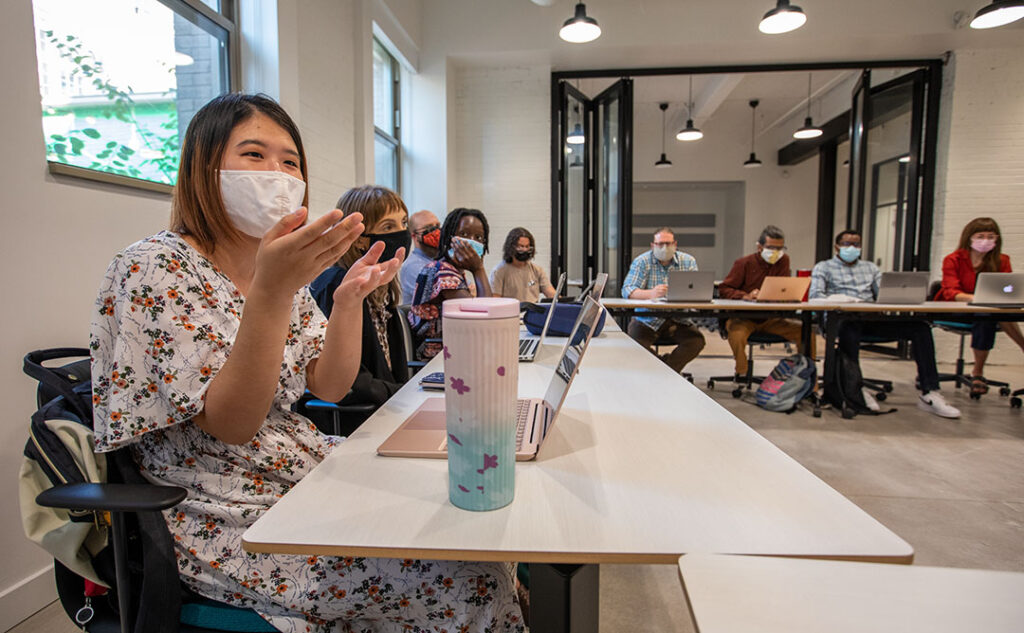
‘Up in history’
Born in St. Louis in 1940, Henry E. Hampton was the son of Henry E. Hampton, MD, chief of surgery at Homer G. Phillips, the city’s primary African American hospital. At WashU, the younger Hampton took pre-med courses but also studied English, hoping to become a fiction writer. But in 1965, his experiences at the civil rights protests in Selma, Alabama, provided the inspiration for what would become Eyes on the Prize.
“A hundred civil rights stories had been told, but it was always Black people being saved by whites. In Eyes, we brought our people up in history.”
Henry Hampton
“A hundred civil rights stories had been told, but it was always Black people being saved by whites,” Hampton recalled in a 1993 interview. “In Eyes, we brought our people up in history.”
Produced by Hampton’s Blackside, Inc., the largest African American–owned film production company of its day, Eyes debuted on PBS as a six-part series in 1987. This was followed, in 1990, by the eight-part Eyes on the Prize II. Together, the two series are widely considered the definitive documentary of the civil rights movement.
The Henry E. Hampton Collection was established as part of the WashU Libraries’ Film & Media Archive in 2002, four years after Hampton’s death. It contains more than 35,000 items, including hundreds of hours of original interview negatives and reel-to-reel audio for Eyes and other feature documentaries. In 2010, a grant from the National Historical Publications and Records Commission allowed the archive to digitize all 124 interviews conducted for Eyes I. Four years later, the archive acquired another 700 film reels and 300 audio reels, as well as videos and manuscript material, comprising the Jack Willis Collection.
Willis, a prolific producer for National Education Television (a forerunner to PBS), frequently tackled racism, poverty, the environment and other issues, highlighting, in his phrase, “unheard voices.” In 1964, Willis released Streets of Greenwood, a groundbreaking short film about civil rights organizing in Greenwood, Mississippi. By the late 1970s, he had begun collecting interviews — 85 in all — with people who’d been deeply involved in the larger civil rights movement.
“Willis envisioned a grand civil rights history that, in scale and topic, would have been a lot like Eyes,” Cunningham explains. “But the project was never realized.”
This, Cunningham continues, raises a series of interesting questions: What might Willis’ history have looked like? Where might it have overlapped with Eyes, and where might it have differed? And how might such differences have influenced our understanding of history?
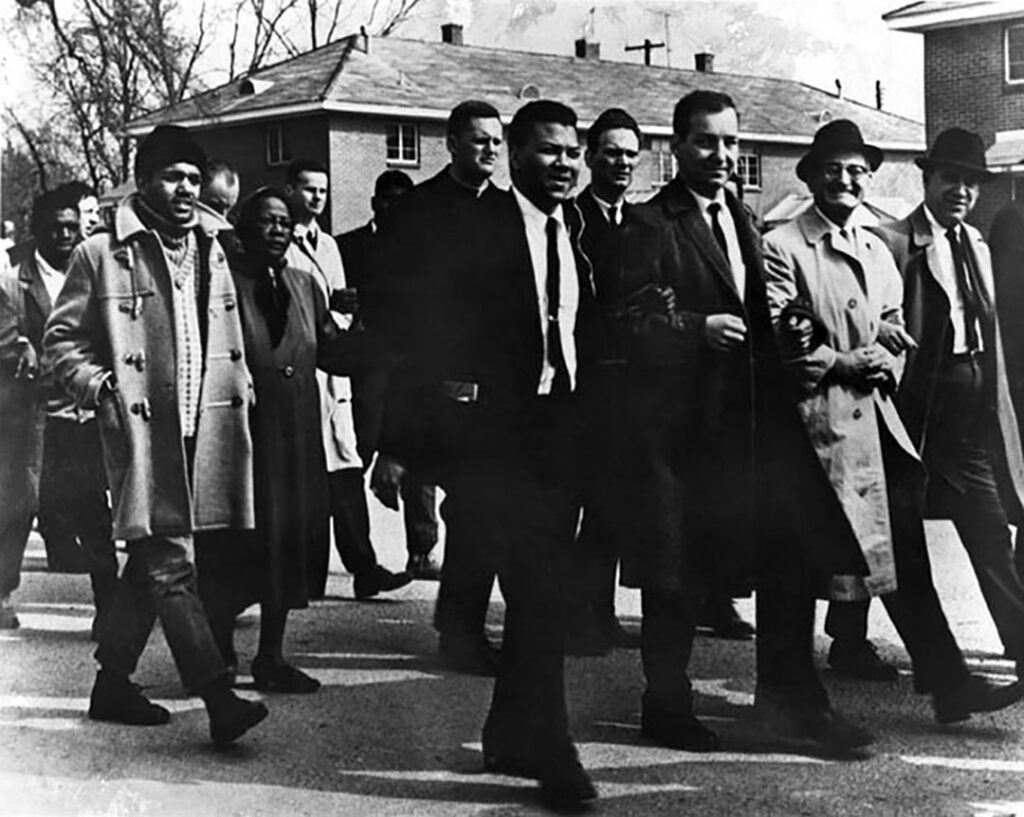
The spirit of the times
Back at the Lewis Collaborative, an interdisciplinary group of nearly 20 students, faculty and staff have gathered in the studiolab suite to discuss the mechanics of digital transcription.
Though the Film & Media Archive’s Eyes on the Prize portal includes full transcripts of more than 300 interviews (the 124 from Eyes I plus another 180 from Eyes II), some important raw materials remain. Chief among these are audio recordings for what Hampton called his Eyes on the Prize “School,” a two-week colloquium, including vibrant sessions with a distinctive mix of movement veterans and leading academics, that preceded the production’s launch.
“Students, even graduate students, don’t generally have a lot of opportunity to think about how those materials are constructed,” Kelling says. “We thought, especially for humanities and social sciences students, this is a crucial point, and something they can take to their own research.”
Loewenstein points out that contemporary, AI-powered transcription software is a useful tool, but that fixing the inevitable mistakes — to say nothing of untangling the crosstalk, false starts and filler words inherent to spoken language — still requires editorial decision making. “Don’t worry about every ‘uh,’” he advises. “The idea is to capture the way a person would honestly transcribe what they had said.”
Soon, the conversation turns to interview strategy. For their first assignment, students contrasted four key Eyes interviews — with Stokely Carmichael, Amzie Moore, E.D. Nixon and Rosa Parks — with Willis’ approach to the same speakers.
“Willis seemed very focused on the local experience of events,” says Orly Einhorn, a junior in sociology, “whereas Hampton was more interested in the national context.”
Naomi Kim, a first-year graduate student in English, points out that, in speaking with Parks, the Eyes team cast a wide net, asking about life in Montgomery, the day-to-day reality of racial discrimination and Park’s reaction to the murder of Emmett Till, among other topics. Conversely, “Willis is very focused on the day of the protest. It reminded me of a courtroom and witness stand, with the lawyer saying ‘Tell us what happened.’”
“Willis was trying to understand Parks’ internal reality,” adds Belhadj. “How did she feel in that moment? What was going through her mind?” Hampton’s team “was trying to capture the spirit of the times.”
Styles and agendas
Next up are the interviews with Moore and Nixon, both local NAACP organizers, and Carmichael, an architect of the Black Power movement. Interview technique remains a focus, but the group also attends to the sometime competing styles and agendas of the interviewees. For example, Moore’s relaxed and roaming manner seems to hardly acknowledge the camera, whereas Nixon continually stresses a few key points, particularly relating to the Montgomery bus boycott. Carmichael, meanwhile, displays a novelist’s eye for detail and an editor’s instinct for revision.
“Carmichael is a pro,” Knox observes. “He’s good at this. He tells the same story five times, giving each take a slightly different emphasis. But I wonder if another tension here isn’t just between interviewer and interviewee, but also between them and us as later viewers. Sometimes I think we want these to be pure oral histories, and they’re not.”
“They’re making a documentary — all of them, camerapeople, interviewers and interviewees,” Loewenstein adds.
In the coming months, the studiolab has plans to travel to Mississippi, both to explore how contemporary institutions present historic civil rights materials and to conduct original field research. For example, in addition to analyzing the Hampton and Willis interviews, the group is preparing to conduct its own interview with Jacqueline Byrd Martin, who’d been a pivotal youth leader in McComb, Mississippi.
“In 1961, after a fellow student was expelled for sitting-in at a bus station, Ms. Martin and her brother led a march out of their high school and up to City Hall,” Cunningham says.
“They were met with brutal violence by a white mob.” Byrd and dozens of others were arrested and pressured into signing a loyalty statement to be readmitted to school. Dozens refused to do so, cementing McComb’s status as a center of resistance and producing severe backlash from the entrenched white power structure as well as the Ku Klux Klan. By 1964, the city was infamously referred to as “the bombing capital of the world.”
“I was able to file a Freedom of Information Act request on the FBI investigation,” Cunningham adds. “Ms. Martin and her brother, Jerome, are all over those files, as leaders and catalysts for the walkout. It was the first mass youth action in the state, but we’re also interested in how that early activism impacted her life and informed her subsequent work on civil rights education.”
Meanwhile, the studiolab is working closely with Jami Ake, assistant dean in Arts & Sciences and senior lecturer in the Interdisciplinary Project in the Humanities, to design the PEP research methods course, which will launch with the spring semester, for the WashU Prison Education Project. Also in the spring, the studiolab will host a short residency with Judy Richardson, the series associate producer and director of education for Eyes on the Prize. Richardson, a Student Nonviolent Coordinating Committee veteran, continues to devise strategies for making the Hampton and Willis archives more accessible to scholars and the public.
“One thing that’s been gratifying is that many of the students’ question are less about ‘what’ than ‘how,’” Loewenstein concludes. “‘How are we going to do this?’ ‘How should we do this?’ ‘What will it cost in terms of time and expense?’
“These are unusual questions for a humanities seminar.”
